ASHOKA: The Great Mauryan King
|
Read. Imagine. Travel.
Namaste! India is achieving great milestones in the Covid-19 vaccination drive with each passing day. With over 1.74 billion doses already administered, around 96.5 per cent of the country's adult population has been administered the first dose of COVID-19 vaccine and around 80% of the adult population is now fully vaccinated in India. The Indian borders are also open now for the International travellers and we are expecting the resumption of scheduled International flights to India soon as well.
 Recognized with the “Safe Travel Stamp”, from WTTC (World Travel and Tourism Council), our team is fully geared up & excited to receive your esteemed guests in India soon. We are aligned with the ‘Safe Travel Protocols’, adhering to our responsibilities as a responsible tour operator and have adopted all health and hygiene global standardized protocols.
Recognized with the “Safe Travel Stamp”, from WTTC (World Travel and Tourism Council), our team is fully geared up & excited to receive your esteemed guests in India soon. We are aligned with the ‘Safe Travel Protocols’, adhering to our responsibilities as a responsible tour operator and have adopted all health and hygiene global standardized protocols.
While you plan a trip with us for your clients, let us take you through another momentous journey based on the architectural marvels commissioned by “ASHOKA: THE GREAT MAURYAN KING OF INDIA”.
For the admirers of architecture, the name of the great Mauryan emperor Ashoka is synonymous in the history of India. He was one of the most powerful kings of the Mauryan Empire. The empire which lasted from 321 BCE - 185 BCE, was the first pan-Indian empire, spanning across central and northern India as well as over parts of modern day Iran. It is the oldest empire after the Indus civilization.
Before Ashoka, the Mauryan kings extensively used wood for building monuments and palaces, which in due course of time fell victim to the vagaries of nature. Ashoka popularized stone for construction of sacred sites, and that's why one will not find any existing Mauryan empire structures before the reign of Ashoka. Apart from his contribution in architecture, Ashoka is also popularly known for patronization of Buddhism. After many bloodsheds, he felt remorseful post the war of Kalinga, where around 100,000-300,000 people suffered due to the war. The guilt was so high that he denounced the violence and followed the path of spirituality thenceforth, spreading Lord Buddha's teachings of tolerance and non-violence. Seeing the change in himself through Buddhism, he decided to preach the religion to others as well to help them realize the importance of inner peace. Apart from verbal communication, he chose art and architecture as a medium. Ashoka built structures in the form of Stupas, Pillars, Rock-cut caves, and inscriptions depicting the life of Buddha, at all the sites patronised by him.
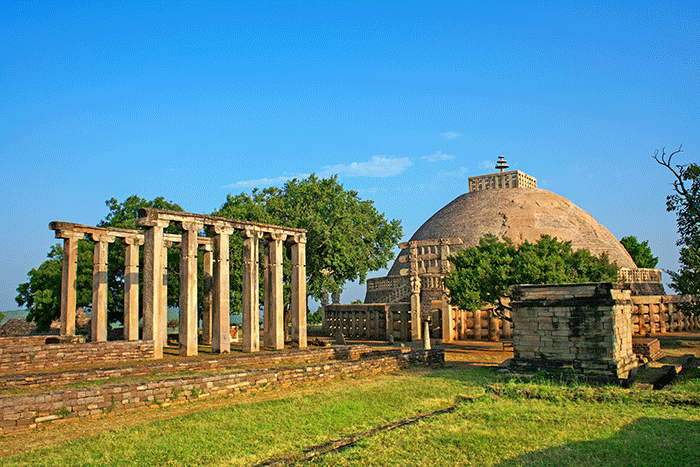
STUPAS:
Stupas are commemorative monuments built of bricks and stones on the funeral spot to preserve remains of the departed soul in the form of bones and ashes. The tradition is popular in Buddhism, and Ashoka is believed to have excavated relics from 08 existing stupas and built around 84000 new stupas preserving parts of these excavated relics.
PILLARS:
A large number of pillars were erected by Ashoka as a symbol of Dharma (religion). The highly polished monolithic pillars were made out of sandstone with capital on the top carrying sculpture(s) of animals, mostly a lion. These were erected in open spaces in front of religious sites. Only Ten pillars are believed to have survived out of 30 pillars erected by him.
INSCRIPTIONS:
He used to inscribe the facts and religious learning on rocks, pillars, and caves. Around 150 edicts are believed to be found. While most of the structures were either demolished during invasions or could not survive the ravages of time, there are still many which withstood till today, storing tales from the past.
Let's explore some of these sites:
 Sanchi Stupa near Bhopal:
Sanchi Stupa near Bhopal: One of the oldest Stupa in India, this 3rd century BCE stone structure commissioned by Ashoka is an important monument exhibiting Indian architecture. It reflects the earliest designs of Stupas, which were hemispherical in shape on the top. Over the period of time, many other empires also contributed to building various small monuments in the surrounding complex. The complex also had an Ashokan pillar, but today only a part of it can be seen with inscriptions. The column of the pillar with structure has detached. It is now exhibited in the nearby Sanchi Museum.
Lying around 46 kms from Bhopal, Sanchi Stupa has many other interesting sites in the vicinity, like Vidisha, known for the remains of Buddhist stupas, caves dedicated to Jainism religion in Udayagiri and many other architecturally interesting temples.
|
Dhamek Stupa in Sarnath: On visiting this Stupa after Sanchi, one will notice the design evolution as this Stupa is in a cylindrical shape. Like all other stupas, this too has Buddha's relics but what makes it even more important is the fact that Lord Buddha delivered his first sermon at this place. The excavated ruins of several monasteries, stupas, and temples show how architecturally rich this place would have been in the ancient times. There is a museum just next to the site, which exhibits various artefacts of the region. As in most of the sites, the Ashokan pillar was built near Stupa. However, today one can only see the pillar at the site. The lion column is placed in the museum next to it. This column's uniqueness is that it has four Lions facing four different directions, unlike other columns with a single Lion sculpture. One will notice this sculpture on India’s National emblem and currency notes as well.
 The brick and stone structure, which is 43.6 meters high and 28 meters in diameter, had undergone additions by various rulers. The site lies just 13 kms from the culturally rich city of Varanasi on the banks of holy Ganges, which itself is a live museum of culture, religion, and spirituality.
The brick and stone structure, which is 43.6 meters high and 28 meters in diameter, had undergone additions by various rulers. The site lies just 13 kms from the culturally rich city of Varanasi on the banks of holy Ganges, which itself is a live museum of culture, religion, and spirituality.
Mahabodhi Temple in Bodh Gaya: Emperor Ashoka built the Mahabodhi temple in 260 BCE at the site where Lord Buddha attained enlightenment. A UNESCO world heritage site, it is today a restored structure. The brick-built temple is not only the first temple built by Ashoka, it is today also among the 04 holy pilgrimage sites for the Buddhists.
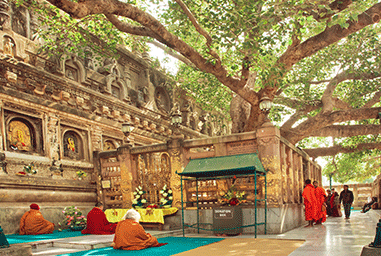 The main attraction in the complex is a descendant of the ‘Bodhi tree’ under which Buddha is said to have sat until he attained enlightenment and Ashoka’s stone slab purporting to mark the exact position where the Buddha sat, traditionally called the Buddha’s vajrasana (literally “diamond throne” or “thunder seat”).
The main attraction in the complex is a descendant of the ‘Bodhi tree’ under which Buddha is said to have sat until he attained enlightenment and Ashoka’s stone slab purporting to mark the exact position where the Buddha sat, traditionally called the Buddha’s vajrasana (literally “diamond throne” or “thunder seat”).
Many Buddhist sites surround the temple complex in Bodhgaya.
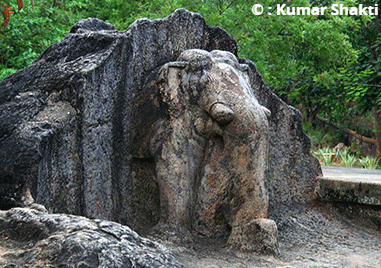 Dhauli Rock Edicts near Bhubaneshwar: The rock edicts of Dhauli narrate the story of combat between Ashoka and Kalinga. This place has been a witness to Emperor Ashoka's penitence after his violent crusade in Kalinga, and his eventual transformation after embracing Buddhism.
Dhauli Rock Edicts near Bhubaneshwar: The rock edicts of Dhauli narrate the story of combat between Ashoka and Kalinga. This place has been a witness to Emperor Ashoka's penitence after his violent crusade in Kalinga, and his eventual transformation after embracing Buddhism.
While some portion of the trail entails easy hike, it could be challenging at some points but the beauty of the trail, which passes through lush green valleys, towns & villages, historical and cultural sites, will be an experience beyond words.
Ashokan Pillar at Vaishali:
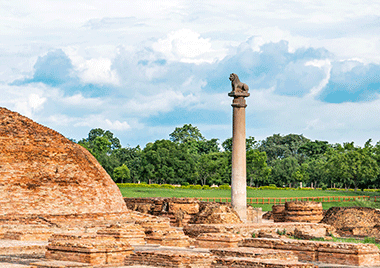
Built by Emperor Ashoka, the lion pillar or Ashokan pillar is made of a highly polished single piece of red sandstone, surmounted by a bell-shaped capital, 18.3 m high. A life-size figure of a lion is placed on top of the pillar. This pillar beside a brick stupa commemorates Buddha's last sermon.
Nearby are the ruins of monastic buildings, where Buddha spent a lot of time.
Barabar caves near Bodh Gaya: Oldest surviving rock cut caves in India, the 3rd century BCE caves are a complex of seven caves, wherein three caves lie on the Nagarjuni hill and four caves on the adjacent Barabar hills. These rock-cut caves on the twin hills are carved out of granite rock and belong to the lost sect of ‘Ajivika’. The sect was prevalent at the times of Ashoka and flourishing alongside Buddhism and Jainism.
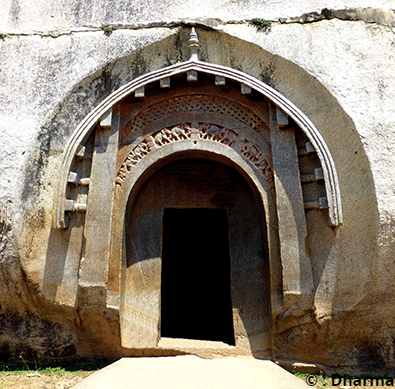
Ashoka was believed to have donated these caves to Ajivika monks. With time, the sect lost its traces, leaving behind very little information about this extinct religion. These caves with the highly polished surface are still worth visiting and lie just 25 kms away from the famous Buddhist sites of Bodh Gaya (Approx. 40 kms) and Rajgir (50 kms).
Bharhut Stupa near Khajuraho: Initially built by Ashoka in the 03rd century BCE, the Stupa got several additions with time from different rulers. It is known for its finest sculptures exhibiting Indian and Buddhist art. The Stupa in ruins today is believed to have set a tradition of crafting Buddhist reliefs on religious structures. The remains of this Stupa can be found in the Indian Museum at Kolkata. The site is approximately 125 kms from Khajuraho famous for its UNESCO listed temples and 120 kms from Bandhavgarh, which is among the best national parks for tiger sightings in the country.
It is really heartening to understand how these edicts or stone structures played an important role in unifying a vast and sprawling Mauryan empire through their shared messages of virtue and thus also led to the expansion of Buddhism in India. This was about just one Mauryan King ‘Ashoka’. India has had a very extensive rich history which has witnessed the rise and fall of various glorious dynasties. The incredible land has many stories waiting to be explored. Come and experience these historic trails with us! We, at Indo Asia Tours, are all about the handcrafted tours, memories, and moments you take out of your trip, and believe us, this escapade will be a life-changing one!
|
Virtual Destination Training Program
|
 Thank you, patrons, for reposing faith in our destinations and enquiring for customised virtual destination awareness training programs. We are proud to conduct them successfully so far and are looking forward to hold similar virtual destination awareness training programs for your team or yourself or a virtual tour for your clients. Let us know the destination of your interest along with your convenient date / time and we will be happy to set up a program for you./span>
Thank you, patrons, for reposing faith in our destinations and enquiring for customised virtual destination awareness training programs. We are proud to conduct them successfully so far and are looking forward to hold similar virtual destination awareness training programs for your team or yourself or a virtual tour for your clients. Let us know the destination of your interest along with your convenient date / time and we will be happy to set up a program for you./span>
Send Request
|
Please feel free to write back to us at marketing@indoasiatours.com to share our thoughts on customized journeys covering the Indian subcontinent or take time to visit our website https://www.indoasia-tours.com. Be sure we will prepare the best program to make a memorable trip for your esteemed clients!
|
|

 Recognized with the “Safe Travel Stamp”, from WTTC (World Travel and Tourism Council), our team is fully geared up & excited to receive your esteemed guests in India soon. We are aligned with the ‘Safe Travel Protocols’, adhering to our responsibilities as a responsible tour operator and have adopted all health and hygiene global standardized protocols.
Recognized with the “Safe Travel Stamp”, from WTTC (World Travel and Tourism Council), our team is fully geared up & excited to receive your esteemed guests in India soon. We are aligned with the ‘Safe Travel Protocols’, adhering to our responsibilities as a responsible tour operator and have adopted all health and hygiene global standardized protocols.

 Sanchi Stupa near Bhopal: One of the oldest Stupa in India, this 3rd century BCE stone structure commissioned by Ashoka is an important monument exhibiting Indian architecture. It reflects the earliest designs of Stupas, which were hemispherical in shape on the top. Over the period of time, many other empires also contributed to building various small monuments in the surrounding complex. The complex also had an Ashokan pillar, but today only a part of it can be seen with inscriptions. The column of the pillar with structure has detached. It is now exhibited in the nearby Sanchi Museum.
Sanchi Stupa near Bhopal: One of the oldest Stupa in India, this 3rd century BCE stone structure commissioned by Ashoka is an important monument exhibiting Indian architecture. It reflects the earliest designs of Stupas, which were hemispherical in shape on the top. Over the period of time, many other empires also contributed to building various small monuments in the surrounding complex. The complex also had an Ashokan pillar, but today only a part of it can be seen with inscriptions. The column of the pillar with structure has detached. It is now exhibited in the nearby Sanchi Museum.
 The brick and stone structure, which is 43.6 meters high and 28 meters in diameter, had undergone additions by various rulers. The site lies just 13 kms from the culturally rich city of Varanasi on the banks of holy Ganges, which itself is a live museum of culture, religion, and spirituality.
The brick and stone structure, which is 43.6 meters high and 28 meters in diameter, had undergone additions by various rulers. The site lies just 13 kms from the culturally rich city of Varanasi on the banks of holy Ganges, which itself is a live museum of culture, religion, and spirituality.
 The main attraction in the complex is a descendant of the ‘Bodhi tree’ under which Buddha is said to have sat until he attained enlightenment and Ashoka’s stone slab purporting to mark the exact position where the Buddha sat, traditionally called the Buddha’s vajrasana (literally “diamond throne” or “thunder seat”).
The main attraction in the complex is a descendant of the ‘Bodhi tree’ under which Buddha is said to have sat until he attained enlightenment and Ashoka’s stone slab purporting to mark the exact position where the Buddha sat, traditionally called the Buddha’s vajrasana (literally “diamond throne” or “thunder seat”).
 Dhauli Rock Edicts near Bhubaneshwar: The rock edicts of Dhauli narrate the story of combat between Ashoka and Kalinga. This place has been a witness to Emperor Ashoka's penitence after his violent crusade in Kalinga, and his eventual transformation after embracing Buddhism.
Dhauli Rock Edicts near Bhubaneshwar: The rock edicts of Dhauli narrate the story of combat between Ashoka and Kalinga. This place has been a witness to Emperor Ashoka's penitence after his violent crusade in Kalinga, and his eventual transformation after embracing Buddhism.
 Built by Emperor Ashoka, the lion pillar or Ashokan pillar is made of a highly polished single piece of red sandstone, surmounted by a bell-shaped capital, 18.3 m high. A life-size figure of a lion is placed on top of the pillar. This pillar beside a brick stupa commemorates Buddha's last sermon.
Built by Emperor Ashoka, the lion pillar or Ashokan pillar is made of a highly polished single piece of red sandstone, surmounted by a bell-shaped capital, 18.3 m high. A life-size figure of a lion is placed on top of the pillar. This pillar beside a brick stupa commemorates Buddha's last sermon.
 Ashoka was believed to have donated these caves to Ajivika monks. With time, the sect lost its traces, leaving behind very little information about this extinct religion. These caves with the highly polished surface are still worth visiting and lie just 25 kms away from the famous Buddhist sites of Bodh Gaya (Approx. 40 kms) and Rajgir (50 kms).
Ashoka was believed to have donated these caves to Ajivika monks. With time, the sect lost its traces, leaving behind very little information about this extinct religion. These caves with the highly polished surface are still worth visiting and lie just 25 kms away from the famous Buddhist sites of Bodh Gaya (Approx. 40 kms) and Rajgir (50 kms).
 Thank you, patrons, for reposing faith in our destinations and enquiring for customised virtual destination awareness training programs. We are proud to conduct them successfully so far and are looking forward to hold similar virtual destination awareness training programs for your team or yourself or a virtual tour for your clients. Let us know the destination of your interest along with your convenient date / time and we will be happy to set up a program for you./span>
Thank you, patrons, for reposing faith in our destinations and enquiring for customised virtual destination awareness training programs. We are proud to conduct them successfully so far and are looking forward to hold similar virtual destination awareness training programs for your team or yourself or a virtual tour for your clients. Let us know the destination of your interest along with your convenient date / time and we will be happy to set up a program for you./span>
